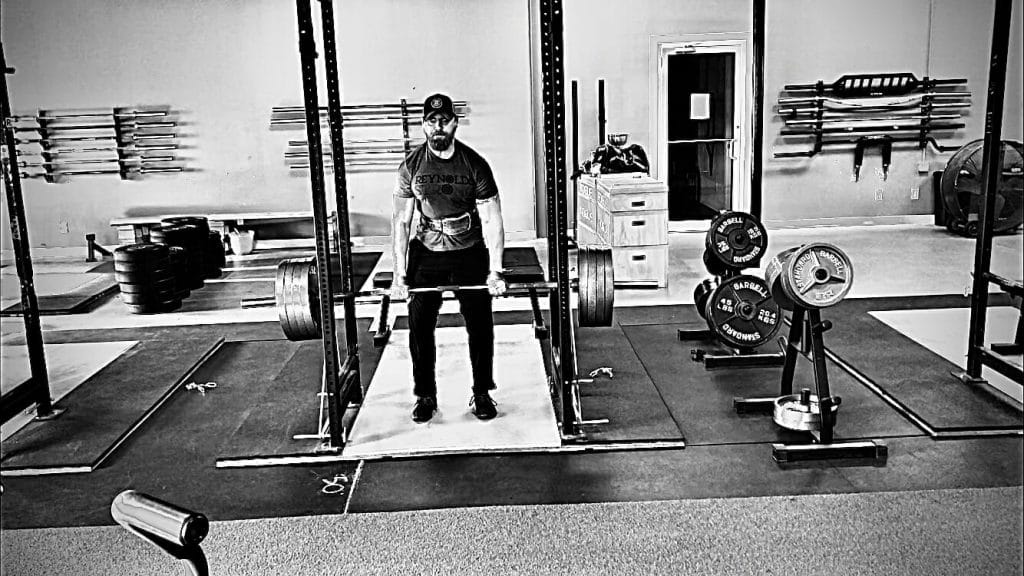When one starts training, the PRs flow like wine. At our gym a new trainee will hit some sort of PR practically every session. This of course, is the honeymoon period. As the trainee grows in his strength, however, PRs will come more slowly and will often need to be more “planned”. That is to say that some amount of training will likely lead up to the PR. Recently, I began using a very simple system to hit my planned training PRs.
What Constitutes a PR?
I need to provide some context. Let us define a PR as some sort of personal record. Obvious I know, but the record need not be an all-time personal best on a classical lift to qualify. This is where many trainees go wrong. Simply stated, the fewer records you track … the less often you’re going to hit a PR. Therefore, I would encourage every lifter to track many different PR types. I recommend record keeping for the classical lifts (squat, bench press, deadlift, snatch, and clean) as well as the many “special exercises” that round out your training. These “special exercises” (sometimes referred to as assistance exercises) would be close variations to the barbell lifts noted above. For example, the rack pull constitutes a large special exercise at our gym. I use (and track) rack pulls from pins 4, 5, and 6 in our R3 racks. These pin positions place the barbell approximately 2″, 4″, and 6″ off the floor respectively. I keep records for each because they all provides some benefit to the overall goal (increasing my conventional deadlift 1 rep max). If the exercise is valuable enough to place into the program, the record is valuable enough to track.
Carrots are Important
More recently, I find myself spending a lot of time thinking about consistency in training. My primary goal as a coach is to keep my athletes consistently training but after a decade of coaching and ~ 4 years of gym ownership, I can tell you that training loses a bit of its shine every so often. Life picks up and other obligations take over. This is not the time to be in a 6 month training PR drought. As a coach I have to find a way to keep training interesting for my athletes. This is not to say we’re going to waste our time doing silly B.S. exercises like single leg deadlifts but people DO need something to look forward to in their training. The day to day grind of training can get the best of us so hitting that fresh new incline bench PR is a big deal if it brings you back to the gym next Monday.
Planned PRs
Now that we’re all on the same page, let us finally arrive at our point. Here is how we hit a planned PR in training:
- Step 1 (select PR target weight)
- Step 2 (calculate 90% of target, this is 1st attempt)
- Step 3 (calculate 95% of target, this is 2nd attempt)
- Step 4 (assuming 1st and 2nd attempts went well, hit PR)
If done correctly, this will yield 3 attempts above what we “think” is 90%. From practical experience, this seems to be about right. Coincidentally, 3 attempts also matches up nicely with what one would do at a competition. Many competitions have been done using this very system, we’re simply applying that same logic to our training.
The Plan in Action
Below is an example of a planned PR in my last training cycle.
- Previous PR (405 lbs + ~ 100 lbs band tension @ top)
- Planned PR (415 lbs + ~ 100 lbs band tension @ top)
- 1st attempt (365 lbs + ~ 100 lbs band tension @ top)
- 2nd attempt (385 lbs + ~100 lbs band tension @ top)
- 3rd attempt (415 lbs + ~ 100 lbs band tension @ top) – PR!!!
I hope this sheds some light on how to approach a PR in your training. If you aren’t regularly hitting PRs then perhaps it’s time to hire a coach OR find a better programming system? Finally, this approach would apply to your special and classical exercises in training. Give it a shot whenever PR attempts come up. Drop us a line and let us know how it worked!
Good luck with your training my friends!
James

